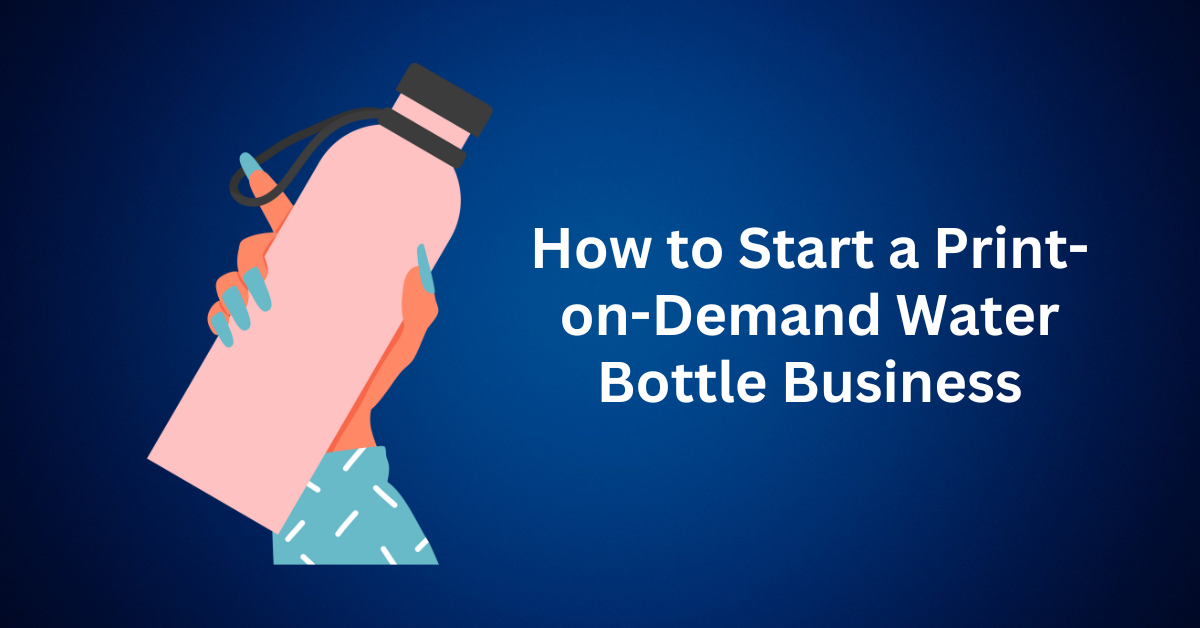Ever find yourself saying, “I want to start a business, but I have no idea what to do”? If that sounds familiar, you’re not alone. Coming up with a business idea can feel overwhelming, especially when you’re staring at a blank notebook or endlessly scrolling through inspiration boards with nothing clicking.
But here’s the good news: profitable business ideas aren’t born out of genius. They’re uncovered through the right methods and mindset. Whether you’re a first-time entrepreneur or looking to launch your next big thing, these brainstorming strategies will help you generate real, viable ideas and turn them into something actionable.
Let’s dive into 9 proven techniques that will help you stop overthinking and start building.
Table of Contents
ToggleWhy You Don’t Need a “Perfect” Business Idea to Begin
One of the biggest myths in entrepreneurship is that you need a groundbreaking, fully-formed idea to get started. In reality, most successful businesses began with something small and far from perfect.

Take Slack, for example, it wasn’t originally built as a workplace communication tool. Instead, it emerged from an internal tool used by a gaming company that failed. Twitter? It started as a side project during the development of a podcasting platform.
These stories reveal an important truth: your business idea doesn’t need to be flawless from the very beginning. What matters most is taking action—testing, refining, and adapting based on real-world feedback.
In fact, many entrepreneurs find success by starting with small, manageable steps. For example, you might offer a freelance service built around your personal skills, test the market with a simple digital product like an eBook or online course, or address a very specific problem for a niche audience.
Ultimately, the key is momentum. By starting small, staying flexible, and learning from each step forward, you give your idea the space to grow and evolve into something truly impactful over time.
9 Practical Ways to Spark a Profitable Business Idea
Struggling to come up with your next business idea? You’re not alone, and the good news is, you don’t need to wait around for a lightning bolt of inspiration.
The truth is, business ideas are everywhere. You just need to learn how to spot them. Whether you’re dreaming of launching a side hustle, building a full-time business, or looking for that one spark to kickstart your entrepreneurial journey, these nine proven strategies will help you discover real opportunities that align with your strengths, passions, and everyday experiences.
Let’s explore nine practical methods to brainstorm and validate your next business idea.
1. Start With Your Strengths and Skills
One of the most overlooked places to uncover business potential lies within your unique skillset. To get started, firstly, ask yourself: What am I naturally good at? Take time to reflect on your work experience, personal interests, side hobbies, or even the things friends and coworkers often praise you for.
After identifying your strengths, the next step is to build what’s known as your “skill stack”—a combination of technical abilities, soft skills, and personal passions. For instance, you might be a digital marketer with an eye for interior design, or a teacher who enjoys producing educational videos. Often, it’s these unexpected intersections that lead to powerful, untapped niche business opportunities.
In the end, when your business idea is rooted in your strengths, it feels more authentic and aligned with who you truly are. As a result, it’s often more sustainable over time, since you’re building from real-world experience rather than starting from scratch.
2. Turn Your Hobbies Into Income: Income-Generating Business Idea
Do you love baking, gardening, or perhaps sketching sneakers in your free time? If so, your passion could become your next profit center.
In fact, many successful entrepreneurs begin by monetizing their hobbies. For instance, if you spend hours perfecting sourdough, you could transform that skill into an income stream by creating an online course, starting a YouTube channel, or publishing a digital cookbook. Similarly, if houseplants are your thing, you might launch a line of quirky cactus-themed merchandise, design printable care guides, or even offer plant consulting services.
However, before diving in, it’s essential to focus on market validation. Start by asking yourself: Are people already spending money on this hobby? To find out, conduct a quick search on Etsy, YouTube, or online course platforms like Teachable or Skillshare. This research can quickly reveal whether there’s genuine demand for your idea.
Ultimately, when your business is fueled by something you truly enjoy, you’re far more likely to stay committed, overcome challenges, and build something meaningful over time.
3. Solve Problems You Experience Every Day
Some of the best business ideas often emerge from solving everyday annoyances in your own life. Think about it this way—if something regularly frustrates you, chances are you’re not the only one feeling that way. In fact, that frustration could be a sign of a real market opportunity.
To uncover these hidden problems, try keeping an “annoyance log” for a week or two. Each time you catch yourself saying, “Ugh, I wish this were easier,” write it down. For instance, if your kitchen drawer is always a tangled mess, could you design a customizable organizer? Or, if no productivity planner ever seems to match your schedule, why not create one that does?
Once you’ve spotted a potential problem, the next step is validation. This means sharing your idea with others—ask friends, post in Facebook groups, or explore forums like Reddit or Quora. If you notice people repeatedly discussing the same issue, you may have uncovered a genuine need worth solving.
Here’s a bonus tip: before investing heavily in manufacturing or production, create a simple prototype or mockup. Then, share it with your target audience and gather feedback. By doing this, you can validate the concept early, fine-tune your design, and move forward with confidence.
4. Spot Market Gaps and Unmet Customer Needs
One of the smartest ways to generate profitable business ideas is to identify what’s missing in the market. Many successful startups didn’t invent entirely new products. Instead, they simply improved what already existed by addressing customer frustrations.
To do this, think like a market detective.
Start by scanning places where consumers share honest feedback:
- Reddit and Quora forums
- Amazon and Shopee reviews (3-star reviews are goldmines)
- Facebook Groups or YouTube comments in your niche
Look for repeated complaints or frustrations with current products or services. Then, organize your findings in a simple Gap Analysis Table:
| Problem | Current Solution | How I’d Improve It |
| “Reusable grocery bags are too bulky and boring” | Plain, oversized canvas totes | Sleek, foldable bags with stylish designs and better storage |
This approach not only helps you uncover underserved needs but also gives you a head start with market validation, because if people are already talking about the problem, there’s demand for a better solution.
5. Ride the Wave of Emerging Trends
Jumping on a trend early can give your business a competitive edge, and no, it’s not about chasing fads, but aligning with shifts in behaviour, lifestyle, and technology.
Start with Google Trends, where the “Trending Searches” section reveals what people around the world are curious about in real time. Next, explore Pinterest Trends, a goldmine for discovering what’s inspiring millions—whether it’s DIY crafts, wedding aesthetics, or seasonal styles. For an extra edge, tap into Exploding Topics to identify niche subjects and emerging consumer interests before they hit the mainstream.
Once you’ve spotted a trend, connect it to your skills or passions. For example, if AI-generated art is booming, you might create AI design templates or sell digital art bundles. A rise in eco-conscious living could inspire a sustainable product line or a blog dedicated to green living. If bathroom organization aesthetics are trending, you might curate a Shopify store featuring minimalist home goods.
Pro tip: Keep a running list of trends and pair each one with a potential business idea. Over time, this “trend tracker” becomes your personal goldmine for launching timely, relevant, and in-demand ventures.
6. Improve What Already Exists (Don’t Reinvent the Wheel)
Sometimes, the best business ideas don’t come from being completely original. Instead, they come from being better. Rather than starting from scratch, consider examining businesses that already exist and ask yourself: How can I do this differently, faster, or with more style?
This approach is how successful companies like Canva and Uber gained traction. Canva didn’t invent graphic design; it made it more accessible and user-friendly. Similarly, Uber didn’t invent ridesharing; it revolutionized the experience by putting it at users’ fingertips through a seamless app-first interface.
Now it’s your turn. Start by studying your competitors. Identify products or services that are already popular but come with frustrating experiences, such as outdated interfaces, clunky onboarding, negative reviews, or inflated prices. These friction points present golden opportunities for innovation.
Next, add your unique twist. Focus on improving the user experience, catering to a specific niche, or bundling your offer with added value. For instance, if local fitness studios in your area provide dull classes with no sense of community, you could launch a hybrid virtual/in-person bootcamp. By incorporating live feedback, challenges, and personalized progress tracking through an app, you create a more engaging and modern solution.
This method reduces risk since you’re building on a proven concept. At the same time, it opens the door to massive upside potential by offering a smarter, more refined version of what’s already working.
7. Ask for Input from Real People (Not Just in Your Head)
Sometimes, your next big idea is hiding in plain sight, but you’re too close to it to see the full picture. That’s where outside perspectives become invaluable. Seeking feedback early is one of the smartest and most strategic moves you can make as a founder or creator.
Begin by sharing your idea in communities where your potential audience already spends time. Platforms like LinkedIn groups, Reddit threads, Discord servers, and X (formerly Twitter) are great places to start. However, instead of asking vague or general questions, focus on specific, targeted inquiries. For example, try asking: “Would you pay for this?”, “What frustrates you most about [the problem your idea solves]?”, or “Which feature matters most in [your product category]?” These pointed questions yield clearer, more actionable responses.
If you want more structured insights, try creating a short survey using free tools like Google Forms or Typeform. Keep it concise—limit it to 5 to 7 key questions—and write a clear, compelling introduction that explains why someone should take the time to respond. To encourage participation, consider offering a small incentive, such as a coffee gift card or early access to your product or service.
In the end, real-world feedback is one of the most powerful tools you have for refining your offer. It helps you uncover blind spots, avoid wasting time on something no one wants, and shape a product or service that truly resonates. By validating your idea early, you significantly boost your chances of building something your target audience will love.
8. Attend Networking Events to Discover Hidden Opportunities
If you’re trying to brainstorm business ideas in a vacuum, you’re missing out on one of the richest sources of inspiration: other people.
Networking events, whether virtual or in-person, are incredible for spotting trends, unmet needs, and collaboration opportunities. From coworking mixers to industry conferences and local entrepreneur meetups, these spaces are full of people talking about real-world business problems (and sometimes the solutions they wish existed).
Here’s where to find them:
- Eventbrite
- Meetup
- LinkedIn Events
- Facebook Groups with niche or local business themes
During the event, be curious, not salesy. Ask:
- “What are you working on right now?”
- “The challenges that you keep running into?”
- “What product or service do you wish existed?”
These offhand conversations often reveal market gaps, startup pain points, or complementary ideas you can run with. And remember to jot down insights right after. You never know which casual comment might be the seed for your next business.
9. Turn Business Ideas into Action by Testing Them Fast
You don’t need a polished brand, a fancy website, or even a fully finished product to validate your idea. In fact, the smartest way to find out if it’s viable is to test it quickly, simply, and at minimal cost.
There are several ways to do this. For example, on platforms like Fiverr or Upwork, you could offer a basic version of your idea as a service, such as “I’ll design a personal brand logo in 48 hours.” This approach allows you to gauge interest while collecting valuable feedback. Similarly, if you have a physical product in mind, you might list a prototype or low-commitment version on Etsy, eBay, or Shopee. Even selling a single item—like a sticker design or handmade journal—can help you test your pricing, messaging, and appeal.
Social media also makes testing fast and accessible. On Instagram Reels or TikTok, share behind-the-scenes clips, product mockups, or “coming soon” teasers. Then, track engagement through likes, shares, and comments to measure interest. Another option is to run a beta test by offering early access in exchange for feedback—for instance, giving away a few free coaching sessions to collect testimonials and refine your service.
Ultimately, testing matters because it reveals whether your idea solves a genuine problem, whether people are willing to pay for it, and what changes might make it better. At the same time, it helps you build momentum, credibility, and buzz before your official launch.

Best Tools & Resources to Help You Brainstorm and Validate a Business Idea
Having the right tools at your fingertips can make a world of difference when you’re brainstorming your next business idea. Whether you’re just getting started or refining a concept, these resources will help you spark creativity, uncover market demand, and validate your idea, without wasting time or money.
Here’s a curated list of top platforms to help you brainstorm, research, and build with confidence.
Business Idea Generators to Kickstart Inspiration
Feeling stuck? These tools can help you generate fresh ideas by combining keywords with business models and brand names:
- Shopify Business Name Generator: Enter a keyword and get a list of business name ideas, perfect for eCommerce ventures.
- Oberlo Business Idea Generator: Get quick and catchy business ideas with a branding twist.
- Namelix: AI-powered tool that creates short, brandable business names based on your keywords and style preferences.
Best for: Solopreneurs, eCommerce starters, creators looking for niche inspiration.
Market Research Tools to Understand Demand
Once you’ve got a spark of an idea, it’s time to see if people want it. These platforms help you dig into search behaviour, keywords, and online trends:
- Google Trends: Track what people are searching for in real-time. Discover rising interest in product categories or seasonal opportunities.
- Semrush: Deep-dive into keyword search volumes, competitor domains, and organic content gaps you can target.
- AnswerThePublic: Visualize real questions and problems your target audience is typing into search engines, great for content and product ideas.
Best for: Validating demand, refining your niche, and planning SEO content.
Community Platforms to Discover Real Pain Points
For real-world insight, a few online communities can serve as invaluable sources of ideas, feedback, and market understanding.
On Reddit, subreddits like r/Entrepreneur, r/SmallBusiness, and niche-specific threads offer rich discussions where people openly share the challenges they face. By browsing these conversations, you can uncover recurring pain points and identify unmet needs. Similarly, Indie Hackers provides a behind-the-scenes look at how entrepreneurs build micro-businesses, SaaS tools, and digital products—often sharing their journeys with transparency and actionable tips. Meanwhile, Product Hunt highlights the latest trending tools, startups, and community feedback, making it a perfect place to see what’s capturing attention and what gaps still exist in the market.
Together, these platforms are powerful for validating ideas, discovering underserved niches, and building a deeper understanding and empathy for your target audience.
AI Tools to Speed Up Brainstorming and Branding
Let AI give your creativity a serious boost—helping you brainstorm faster, communicate more clearly, and visualize your ideas instantly.
For example, with ChatGPT, you can quickly generate tailored business ideas, niche suggestions, and early feedback using just a few prompts. This means you can refine your concepts in minutes instead of days. Similarly, Midjourney lets you produce stunning AI-generated visuals to mock up products, logos, or ad creatives—perfect for testing market response before committing to a final design. And when it comes to words, Copy.ai can craft high-converting ad copy, taglines, or product descriptions in seconds, saving you time while keeping quality high.
Altogether, these tools are a game-changer for solopreneurs, creators, and anyone who wants to speed up ideation and content creation—without sacrificing quality.
Extra Tools for Surveys, Trends & Testing
If you’re serious about validating your business idea, these resources will help you collect feedback and spot demand signals:
- Typeform – Create sleek, interactive surveys to test new ideas with potential customers.
- Google Forms – A free and easy way to collect feedback, especially in Facebook Groups or via email.
- Pinterest Trends – Discover what’s trending in DIY, fashion, home décor, and more, especially useful for product-based businesses.
- LinkedIn Events – Attend webinars and entrepreneur-focused networking events to spark ideas and build connections.
Best for: Gathering honest feedback, running mini-market tests, and tracking consumer trends.
How to Test a Business Idea Without Spending a Fortune
Think you need a full business plan, a sleek logo, or thousands of dollars to see if your idea will work? Think again.
Validating a business idea doesn’t have to be expensive or complicated. Some of the best entrepreneurs started by testing their concepts with almost no budget. The goal isn’t perfection. It’s traction. You want to know: Will people pay for this?
Here are 12 low-cost, practical ways to test your business idea before you fully commit.
1. Build a Minimum Viable Product (MVP) for Your Business Idea
Start small. Create the simplest version of your product or service that delivers the core benefit, no fancy features, no complex systems.
Whether it’s a one-page website, a basic prototype, or a limited version of your service, the goal is to put it in front of real users and see if they’re interested. Think of it as a test run, not a final launch.
💡 Example: Offer a “lite” version of your coaching program or a single handcrafted item instead of a full collection.
2. Offer a Beta Test to Real Users for Your Business Idea
Before going public, share your MVP with a select group of early adopters. Friends, followers, or niche communities. Ask for honest feedback on what works, what’s missing, and whether they’d pay for it.
This soft launch gives you valuable data without the pressure of a full-scale rollout.
3. Use Social Media Polls and Questions for Your Business Idea
Social platforms are powerful testing grounds. Use tools like Instagram polls, LinkedIn surveys, or Facebook group questions to get fast, informal feedback.

Ask things like:
- “Would you buy this?”
- “What feature matters most to you?”
- “Which version do you prefer?”
It’s a great way to validate assumptions and build early engagement.
4. Build a Simple Website or Landing Page for Your Business Idea
Create a basic sales or pre-order page using tools like Wix, Shopify, or WordPress. Include a short pitch, visuals, and a call to action, such as “Sign up for early access” or “Pre-order now.”
Track how many people land on the page and take action. If no one bites, it’s a signal to tweak your messaging or offer.
5. Test Your Business Idea as a Freelance Service
Not ready to build a product? Offer your idea as a simple freelance gig on platforms like Fiverr, Upwork, or PeoplePerHour.
It’s a quick way to test real demand with minimal effort. If clients start rolling in, you’ll know your concept has legs and you’ll earn while you learn.
6. Sell Through Existing Marketplaces
Leverage platforms with built-in audiences to quickly reach potential customers without the heavy lifting of building traffic from scratch.
For example, Etsy is ideal for selling handmade or digital goods, while Amazon works well for a wide range of consumer products. eBay caters to niche or vintage items, making it a great choice for unique finds. If you’re offering services, platforms like Upwork and Fiverr connect you directly with clients looking for your skills.
These channels make it easier to test pricing, gauge product–market fit, and measure demand—all with minimal upfront costs and reduced risk.
7. Run a Local Pop-Up or Market Stall for Your Business Idea
If you want real-time feedback, consider setting up a booth at a weekend market, community fair, or local event. By engaging directly with potential customers, you’ll gain insights that are often difficult to capture online.
Moreover, even a single-day pop-up shop can be incredibly valuable. It allows you to test and refine your pitch while gaining a deeper understanding of buyer behavior in a real-world setting.
8. Launch a Micro Ad Campaign for Your Business Idea
To get started, consider spending a small amount anywhere from RM30 to RM100 on targeted ads through platforms like Facebook, Instagram, or Google. Rather than launching a full campaign, the purpose here is to test the waters. Begin by creating a simple, eye-catching ad with a clear call to action that leads users to your landing page or survey.
As the ad runs, make sure to closely monitor key performance indicators such as click-through rate (CTR), sign-ups or pre-orders, and the quality of comments and reactions. These real-time metrics offer immediate insight into how well your idea resonates with your target audience.
Ultimately, this low-cost experiment can help you uncover valuable feedback, validate market demand, and fine-tune your offer, all before committing significant time or resources to further development.
9. Host a Workshop, Webinar, or Class for Your Business Idea
Share your expertise through a low-cost online workshop, local class, or webinar. Not only do you position yourself as a thought leader, but you also gauge interest in deeper offerings, like courses, coaching, or digital products.
It’s an effective way to build your email list and validate your niche.
10. Partner With Someone to Share Costs for Your Business Idea
Don’t go it alone. Collaborating with another entrepreneur can help you pool resources, tap into new audiences, and reduce risk.
Whether it’s co-hosting a webinar or launching a product together, a partnership makes testing more affordable and efficient.
11. Create a Demo Video or Visual Preview
Don’t just tell people about your product. Show them. Create a short, engaging video that clearly demonstrates what your product or service does and, more importantly, how it solves a real problem your audience faces.
Then, share it on platforms like TikTok, Instagram Reels, or YouTube Shorts to see how people respond. Pay close attention to the comments. If viewers start asking, “Where can I get this?” that’s a strong signal you’re headed in the right direction.
12. Track Feedback and Pivot When Needed
Gather all the feedback, reactions, and data you’ve collected from your test. Don’t be afraid to refine or even change your idea if needed; early pivots can save months of wasted time.
Use tools like Google Sheets, Notion, or Trello to organize and prioritize feedback so you can make informed improvements.
How to Start a Print-on-Demand Business with Printify (Step-by-Step)
If you’re looking to start an online business without holding inventory or spending thousands on upfront costs, Print on Demand (POD) is the perfect model to explore. It allows you to sell custom-designed products like t-shirts, mugs, tote bags, and more, without dealing with manufacturing, storage, or shipping.

One of the most beginner-friendly platforms to help you launch a POD business is Printify. With its free setup, vast product catalog, and integration with top eCommerce platforms, it’s ideal for entrepreneurs, creators, and side hustlers alike.
Here’s a step-by-step guide on how to start selling custom products with Printify:
1. Sign Up for Printify
The first step to getting started is creating your free account on Printify. Fortunately, the registration process is quick and straightforward, giving you immediate access to a wide range of helpful tools and resources. Once you’re logged in, you’ll find step-by-step guides, video tutorials, and a dedicated support team ready to assist you at every stage.
Whether you’re planning to launch a full-scale brand or simply explore an online side hustle, Printify’s beginner-friendly onboarding process is designed to help you start with confidence. Right from the beginning, you’ll have everything you need to turn your ideas into real, sellable products, all without feeling overwhelmed.
2. Choose Products
Once your account is set up, the next step is to explore Printify’s extensive product catalog. With over 1,300 items available, you’ll discover everything from fashion apparel and eco-friendly tote bags to home décor, accessories, and even pet products.
To streamline your search, you can filter products by category, supplier, price, or popularity. This makes it easier to quickly identify items that align with your target audience or niche. As a result, curating a product lineup that feels unique, cohesive, and on-brand becomes a straightforward process, regardless of the type of store you’re building.
3. Add Your Designs
Once you’ve selected your products, the next step is to bring your creative vision to life. With Printify’s intuitive Product Creator, you can seamlessly upload your custom artwork or design right on the platform. Plus, you can enhance your creations using built-in text tools, pre-made patterns, and even AI-generated visuals, making the entire process both simple and inspiring.
What’s more, you’ll be able to preview your designs on high-resolution mockups, giving you a realistic view of how each item will look once printed. This intuitive design process makes it fast and stress-free to transform your creativity into polished, professional products, ready to list and sell.
4. Connect a Store
Printify seamlessly integrates with major eCommerce platforms and marketplaces, making the selling process smooth and efficient. Whether you’re using Etsy, Shopify, Amazon, Wix, or WooCommerce, you can connect your store to Printify in just a few clicks.
Once integrated, your product listings, orders, and fulfillment processes are automatically synced, eliminating the need to manage each sale manually. This level of automation not only saves you time but also minimizes errors, so you can focus on growing your business rather than handling day-to-day logistics.
5. Start Selling
Once your store is connected and your products are published, you’re ready to start selling. When a customer places an order, Printify’s global network of print providers takes care of everything, from production and packaging to shipping and delivery. You won’t need to worry about storage, logistics, or handling returns. You focus on your brand, marketing, and growth, while Printify handles the back end.
First Steps to Starting a Business
Thinking about starting a business? Whether you’re launching a side hustle or building your dream full-time brand, laying the right foundation is key to long-term success. Before you start designing logos or building a website, it’s essential to tackle a few strategic steps that will help turn your idea into a profitable venture.
Here’s a clear, action-oriented guide to help you take those first steps. Built for beginners, dreamers, and doers alike.
Start with a Solid Business Plan
Every successful business starts with a clear roadmap. A business plan isn’t just paperwork. Instead, it’s your strategic compass that keeps you focused, organized, and prepared. It should outline your business mission, core goals, target market, value proposition, competitor insights, marketing approach, and financial projections.
Not sure where to begin? Use free tools like BPlans or LivePlan to access templates that make the planning process easier. Your business plan doesn’t need to be perfect from the start, but it should be structured enough to guide your decisions and flexible enough to evolve as you grow.
A well-thought-out plan also makes you more attractive to potential investors, collaborators, or partners who want to understand the vision behind your business.
Choose the Right Business Model and Make It Official
Before launching, it’s important to choose a business model that matches your strengths, budget, and long-term goals. Some popular business models include:
- Print on Demand or Dropshipping (great for eCommerce beginners)
- Freelancing or Consulting (ideal for service-based professionals)
- Subscription Boxes or Memberships
- B2B Services or Wholesale
- Digital Products or Courses
Each model comes with its own startup requirements, risk levels, and marketing needs, so do your research before committing.
Once you’ve selected a path, it’s time to make things official. In the U.S., visit SBA.gov or your state’s registration site to register your business name and structure (LLC, sole proprietorship, etc.). If you’re based in the EU or elsewhere, your national business portal or the EU Startup Guide can provide step-by-step instructions. Proper registration opens doors to legal protections, tax benefits, and growth opportunities.
Define and Streamline Your Sales Process
Your sales process is the bridge that turns curious browsers into paying customers—and eventually into loyal fans. To begin, start by setting smart, competitive pricing. This means taking time to research your competitors, understanding your cost structure (including materials, tools, and platform fees), and ensuring your prices allow for profit without driving away potential buyers.
Next, if you’re selling online, focus on building a professional storefront through platforms like Shopify, WooCommerce, or Wix. In doing so, prioritize a clean layout, simple navigation, and a fast, secure checkout process. When it comes to payments, integrate trusted options such as Stripe, PayPal, or Buy Now, Pay Later tools to encourage more conversions.
Beyond that, never underestimate the power of excellent customer service. Prompt responses, clear product descriptions, helpful FAQs, and straightforward return policies all help build trust. Finally, after each sale, follow up with customers to request reviews or referrals. At the same time, take a moment to evaluate what worked and what didn’t, so you can keep refining and improving your customer journey over time.
Promote Your Business with Smart, Targeted Marketing
No matter how great your product or service is, it won’t sell itself. You need to market it. In other words, success depends on getting in front of the right people, in the right places, at the right time.
To begin, start by identifying your ideal customer. Ask yourself: What problems are they facing? What do they care about? Where do they spend their time online? Instagram, TikTok, Facebook, YouTube, or niche forums? By answering these questions, you’ll gather the insights needed to guide your marketing strategy with precision.
Once you know your audience, focus on building a consistent and engaging presence on the platforms they use most. Share behind-the-scenes glimpses, product updates, educational tips, and even user-generated content to strengthen both trust and visibility. At the same time, remember that content marketing is a long-term investment worth making. Blogs
Finally, encourage word-of-mouth marketing by incentivizing referrals, showcasing customer testimonials, and maintaining consistency in your brand message. When all these elements work together, your marketing strategy becomes not only more effective but also more sustainable.
Measure What Matters, Adjust When Needed, and Keep Growing
Launching your business is only the first step—true, sustainable growth comes from consistently analyzing what works and what doesn’t.
To start, use Google Analytics to monitor your website traffic and conversions. This will give you a clear view of how visitors are finding your site and how they interact once they’re there. In addition, track your social media performance to pinpoint which posts and campaigns drive the highest engagement. At the same time, send out regular customer surveys to gather feedback, helping you uncover both what people already love and where they believe there’s room for improvement.
As you review your data, ask yourself important questions: Which products are performing best? Which marketing channels deliver the strongest results? Where in the sales process are customers dropping off? And perhaps most importantly, what do customers truly value—and what do they wish you’d improve?
Use these insights to refine your offers, test new ideas, and enhance the overall customer experience. Don’t be afraid to pivot if something isn’t working. The most resilient entrepreneurs are the ones who stay curious, keep learning, and adapt to market trends.
Final Thoughts: Start Your Entrepreneurial Journey Today
Starting your own business doesn’t have to feel overwhelming or risky. In fact, with the right tools, clear planning, and a focus on low-overhead strategies, you can build something profitable from the ground up, without burning out or breaking the bank.
To begin with, lean into resources that simplify the process. Along the way, ask questions, stay curious, and focus on building a lean operation that prioritizes smart decision-making, customer value, and long-term growth. When paired with a streamlined business structure, creative content marketing can help you stay visible and competitive, especially in today’s digital-first landscape.
If you’re just getting started, one of the smartest ways to break into entrepreneurship is by launching a print-on-demand business. With platforms like Printify, you can easily turn your ideas into unique, custom products, list them for sale online, and fulfill orders without ever holding inventory. As a result, you can begin generating income from day one—without the usual upfront costs and logistical headaches. This model is simple, highly scalable, and perfect for aspiring entrepreneurs eager to hit the ground running
So, why wait? Take the first step toward turning your ideas into income, and begin building a business you can truly be proud of.



